| Botanical Name |
|
| Family |
Geraniaceae - The geranium family. |
| Pronunciation |
pe-lar-GO-nee-um eye-oh-nid-ih-FLOR-um |
| Common Name(s) |
USA: Celery Scented Pelargonium
|
| Plant Group |
- Ground Cover A plant with a low-growing, spreading habit, grown specifically to cover the ground.
- Perennial A plant whose life cycle lasts for three or more seasons.
|
| Plant Size |
- Small to Medium
| Tree | 8m to 15m |
| Shrub | 75cm to 1m |
| Perennial/ground cover | 20cm to 40cm |
| Bulb | 30cm to 40cm |
| Succulent | 20cm to 40cm |
|
| Position |
- Light or Dappled Shade Found below trees with sparse, open foliage. Ideal for the protection of herbaceous plants.
- Partial Shade The area is in shade for part of the day and in full sun for part of the day.
- Sun The area is in full sun for all or most of the day, all year round.
|
| General Information |
- Drought Tolerance: High The plant is well adapted to arid conditions; it can survive long periods of drought and high temperatures without extra water.
- Evergreen Plants that have leaves all year round.
- Frost: Half-hardy The plant is able to survive low temperatures and some frost but requires protection against severe frost.
- Water Wise Plant species originating from low rainfall regions that require less water to survive and thrive than other plant species.
- Wind Tolerant Plants able to withstand the effect of strong winds.
|
| Specific Information |
Pelargonium ionidiflorum has unusually soft ruffled leaves and cascading stems tipped with flowers almost all year long. This small, woody shrublet grows up to 0.5 m high but can be pruned back to shape and to increase density. The delicate light pink to dark violet pink flowers have wine-red markings on the upper petals.
The Karoo where Pelargonium ionidiflorum grows naturally receives 300 to 750 mm of rain a year, with very high summer temperatures and winter temperatures that reach below 0ºC.
Although it is reported that the leaves have a delicate smell of celery, I have not been able to verify this from my specimens.
|
| Ad Break |
|
| Flowers |
| Description |
3 plain coloured lower petals and two upper petals with wine-red markings
|
| Season |
- All Year Plants will seldom bloom for the entire season as given in the list, but should flower during a period within these parameters.
|
| Colour |
|
| Growth Rate |
- Moderate to Fast Specifying growth rate can be very misleading as there is considerable variation of growth rate depending on type and species of plant, available water, supplementary feeding, mulching and general care, as well as the plants suitability and adaptability to the garden environment.
|
| Plant Uses |
- Attracts bees, butterflies or other insects This plant attracts insects which can be food for birds or other creatures in your garden.
- Attracts Birds This plant will attract birds.
- Container Trees, shrubs and ornamental species that can adapt to growing in a restricted environment.
- Edging A low growing plant that provides softness or definition to the edges of a bed or walkway.
- Filler Either a fast growing tree or shrub used temporarily to fill in an area while the permanent plants grow to a desired size, or a plant used to fill gaps in borders or beds.
- Ground Cover Low-lying plants that spread fast, require minimal maintenance, and cover large expanses or bare areas between bulbs or shrubs. They provide protection from erosion and drought and improve the visual appearance of the garden.
- Pot Plant A plant that needs a protected environment on a patio or indoors.
- Retaining Walls Shallow rooted plants for cascading over dry stone walls or planting in hollow spots in retaining blocks.
- Rock Garden An area constructed of larger rocks, arranged naturally, to emphasise the use of stones as a main element. Generally plants used do not need a lot of care.
- Suitable for smaller gardens Such plants do not have invasive root systems, remain small or controllable and can often be grown in containers.
- Wild Garden An indigenous garden planted for the benefit of wildlife and birds. Provides food, water, a variety of mini-biomes and no poisonous chemicals are used.
|
| Distribution and Habitat |
in the Eastern Cape in the districts of Craddock, Somerset East, Fort Beaufort and Grahamstown, in Albany thicket, grassland and Nama Karoo, among rocks and under shrubs
|
| Planting Suggestions |
Pelargonium ionidiflorum needs a sunny position with well drained soil and is well suited to areas with extreme temperatures between winter and summer, and gardens with very dry soil. Bear in mind that in its habitat, where extreme temperatures are experienced, it does grow in the protection of shrubs which give it some protection from burning sun and icy winds and frost.
In a milder climate it can be grown in full sun without protection. Its trailing habit makes it an excellent choice for hanging pots, rock gardens and steep slopes, and could also be tried in the pockets of holding walls.
I have grown it in a coastal garden with slightly saline soil and in my own garden in composted soil and it has responded well in both locations.
|
| Medicinal Uses |
|
| Ad Break |
|


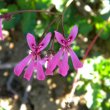
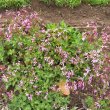
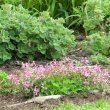
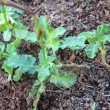
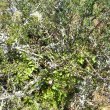
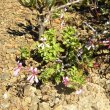


Discuss this plant
Share knowledge, ask a question or give an experience.